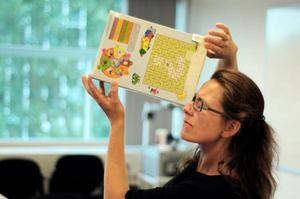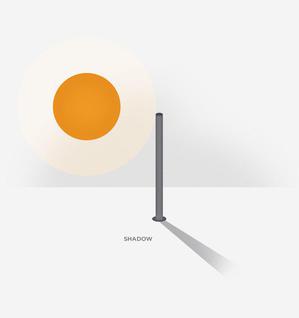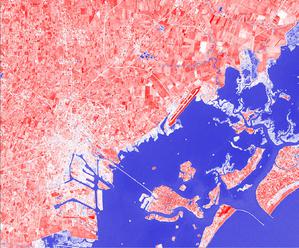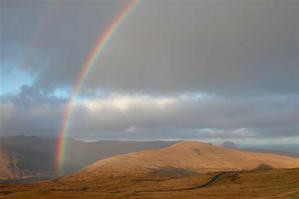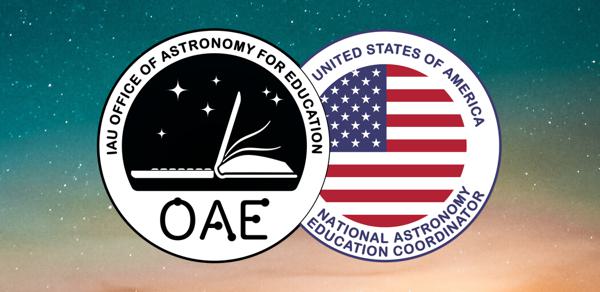Glossary term: 光
Description: 光的本質是電磁輻射。在通常情況下,“光”一般是指波長處在一定範圍內、從而讓我們人類可以用肉眼看到的電磁輻射。人類能看到的光波長大致在380-750納米(nm)之間,不過大多數人對波長短於 400 納米的光敏感度很低。這只是電磁波譜的一個狹窄部分,完整的電磁波譜涵蓋了從伽馬射線(最短)到無線電波(最長)的各種波長。更廣義地說,“光”這個術語有時適用於所有電磁輻射。
光的基本屬性包括強度、傳播方向、頻率、光譜和偏振。光在真空中的速度被定義為每秒299,792,458米,這是自然界的基本常數之一。光的顏色取決於它的波長。在可見光譜中,紫光的波長最短,紅光的波長最長。光有多種來源,包括自然光和人造光,而太陽是地球的主要光源。光是以一份一份的不連續形式發射和吸收的,這樣的一“份”稱為一個光子。光子同時具有波和粒子的特性,這種現象被稱為波粒二象性。
Related Terms:
See this term in other languages
Term and definition status: The original definition of this term in English have been approved by a research astronomer and a teacher The translation of this term and its definition is still awaiting approval
This is an automated transliteration of the simplified Chinese translation of this term
The OAE Multilingual Glossary is a project of the IAU Office of Astronomy for Education (OAE) in collaboration with the IAU Office of Astronomy Outreach (OAO). The terms and definitions were chosen, written and reviewed by a collective effort from the OAE, the OAE Centers and Nodes, the OAE National Astronomy Education Coordinators (NAECs) and other volunteers. You can find a full list of credits here. All glossary terms and their definitions are released under a Creative Commons CC BY-4.0 license and should be credited to "IAU OAE".
If you notice a factual or translation error in this glossary term or definition then please get in touch.
Related Activities
Build a Safe Sun Viewer
astroEDU educational activity (links to astroEDU website) Description: Build a safe Sun viewer using cheap household items and learn why it is dangerous to look directly at the Sun, even briefly.
License: CC-BY-4.0 Creative Commons 姓名標示 4.0 國際 (CC BY 4.0) icons
Tags:
Hands-on
, Safety
Age Ranges:
6-8
, 8-10
, 10-12
Education Level:
Primary
, Secondary
Areas of Learning:
Modelling
, Observation based
Costs:
Low Cost
Group Size:
Group
Skills:
Planning and carrying out investigations
Sun’s Shadow
astroEDU educational activity (links to astroEDU website) Description: Why is the Sun's shadow so important?
License: CC-BY-4.0 Creative Commons 姓名標示 4.0 國際 (CC BY 4.0) icons
Tags:
Hands-on
, Shadows
Age Ranges:
6-8
, 8-10
, 10-12
, 12-14
, 14-16
Education Level:
Informal
, Middle School
, Primary
, Secondary
Areas of Learning:
Observation based
, Social Research
Costs:
Medium Cost
Duration:
1 day
Group Size:
Group
Skills:
Asking questions
, Communicating information
, Constructing explanations
, Engaging in argument from evidence
How Many Stars Can You See at Night?
astroEDU educational activity (links to astroEDU website) Description: Investigate the effects of light pollution on night sky observation.
License: CC-BY-4.0 Creative Commons 姓名標示 4.0 國際 (CC BY 4.0) icons
Tags:
Software
, ecology
, Observation of sky
, Pollution
, Constellations
, stellarium
Age Ranges:
12-14
Education Level:
Middle School
Areas of Learning:
Observation based
, Social Research
Costs:
Low Cost
Duration:
45 mins
Group Size:
Group
Skills:
Analysing and interpreting data
, Communicating information
, Planning and carrying out investigations
A View from Above
astroEDU educational activity (links to astroEDU website) Description: How do satellites take images of the Earth surface and how do we analyse and use them?
License: CC-BY-4.0 Creative Commons 姓名標示 4.0 國際 (CC BY 4.0) icons
Tags:
Maps
, Climate
, Landsat
, Earth observation
, Sentinel
, Copernicus
, Remote sensing
, Vegetation
Age Ranges:
14-16
, 16-19
Education Level:
Middle School
, Secondary
Areas of Learning:
Social Research
Costs:
Low Cost
Duration:
1 hour 30 mins
Group Size:
Group
Skills:
Analysing and interpreting data
, Asking questions
, Communicating information
, Constructing explanations
, Developing and using models
, Engaging in argument from evidence
, Using mathematics and computational thinking
Reading the Rainbow
astroEDU educational activity (links to astroEDU website) Description: By understanding how rainbows work, you can discover about light and its properties, learning about stars, nebulae, galaxies, and our Universe.
License: CC-BY-4.0 Creative Commons 姓名標示 4.0 國際 (CC BY 4.0) icons
Age Ranges:
14-16
, 16-19
, 19+
Education Level:
Informal
, Middle School
, Secondary
, University
Areas of Learning:
Interactive Lecture
, Observation based
, Social Research
Costs:
Low Cost
Duration:
1 hour 30 mins
Group Size:
Group
Skills:
Analysing and interpreting data
, Asking questions
, Engaging in argument from evidence
